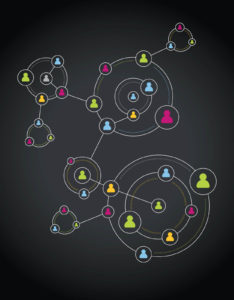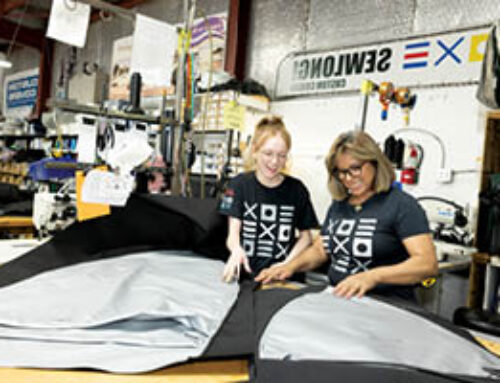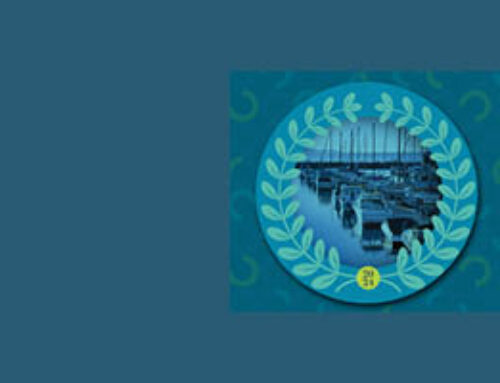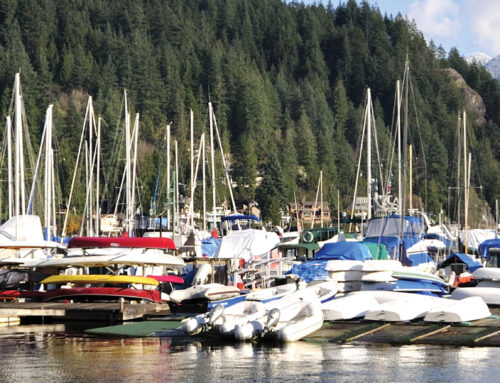Marketing in the digital age
 Like all things, marketing products and services have changed over the past decade. A typical marketing campaign of yesteryear for a small business involved direct mail, print ads, radio and billboard advertising, flyers, posters and listings in the Yellow Pages. Today, 98 percent of consumers search online for products, services and businesses. The term Search Engine Optimization, or SEO, is not something to ignore. In fact, your website is the center of activity where lead generation is concerned, especially if it is optimized to attract visitors through search engines, the blogosphere and social media.
Like all things, marketing products and services have changed over the past decade. A typical marketing campaign of yesteryear for a small business involved direct mail, print ads, radio and billboard advertising, flyers, posters and listings in the Yellow Pages. Today, 98 percent of consumers search online for products, services and businesses. The term Search Engine Optimization, or SEO, is not something to ignore. In fact, your website is the center of activity where lead generation is concerned, especially if it is optimized to attract visitors through search engines, the blogosphere and social media.
The Yellow Pages have been replaced largely by websites and location-based Internet search services. Facebook, with more than a billion monthly active users, and more than a trillion page views every month, drives 85 percent of online shopping. It has helped 67 percent of business-to-consumer (B2C) and 41 percent of business-to-business (B2B) companies to generate business, according to HubSpot.com. Twitter has assisted 42 percent of companies on its portal to bring in new customers, and 57 percent of company blogs are credited with such acquisition. Such “inbound” strategies, through which you “get found” by people who are seeking information or are shopping in your industry, often are less costly than outbound marketing and are growing in use. And they offer the ability to directly target your audience, especially local customers, and see more immediate results.
All roads lead to your online presence
Mark Hood, a marine fabricator for 30 years, says he used to attend boat shows and place small classified ads to promote his business, always looking for the least-expensive route with the best results. Today, he primarily uses his website and Facebook to attract customers. Hood Marine Canvas in Merrimac, Mass., comes up third in a Google search for “marine canvas in Massachusetts.” To attain that prized position in the top 10 on a Google search takes time and attention, but it is Hood’s principal lead generator for new business.
“As far as a website goes, you need to spend time with it,” he says. “If no changes are made to a website, Google doesn’t consider it active and it won’t get a top rank. If you’re not doing SEO and you’re not appearing on that first page, you might be missing jobs. I would rather spend a little more time on social media and my website because it gets your name out there and gets people calling you and then you can choose what jobs you want to do.”
Hood uses Google Analytics to view how people are finding him, what pages they’re visiting and how long they’re on the page. His SEO tactics include using keywords—the words people use to search a topic—on his home page, landing pages, and in individual page descriptions. He also posts links on his site as a service to customers, which also draws more traffic. These include links to yachting clubs, marinas, boat-repair services and even other canvas shops that have a different customer base.
“People use my website to find links to other sites,” he says. “If they need to find a frame bender or other suppliers, I tell them to go to my links page. That helps my rating. The more they come to your site, the better ratings you get.”
Social media
Social media has forever changed the face of marketing. Consumers now initiate 150 million conversations with brands each day on such social media sites as Facebook, Twitter and LinkedIn. These mediums allow business owners to monitor, facilitate and participate in online conversations about their brand, industry, product or services, and better identify their customer base.
Hood spends as much time on his Facebook page as on his website, primarily posting photos of his work and links to his website. More and more companies are driving online search traffic to their Facebook pages where potential customers can interact, leave comments and become a “fan,” all of which increases brand loyalty.
It takes time, however, to build up Twitter “followers,” Facebook “likes,” and LinkedIn endorsements. After several years of working it, Hood has about 130 “likes” on his Facebook page. “I see so many people start up Facebook accounts and then it sits. They don’t actively post stuff,” he says. “Don’t put up a Facebook page unless you’re going to post on it.”
It has been a challenge to get the older, more affluent customer base on Facebook, notes Charlene Clark, co-owner of Signature CanvasMakers in Hampton, Va. Still, it is no cost to have one, it offers a place for conversation with customers, and it establishes credibility for the business, she says.
At age 30, Alan Woodyard, new owner of W Marine Canvas in Annapolis, Md., is of the generation that grew up with technology and the Internet. His main marketing focus is online and his primary marketing tool is his website with multiple layers to that strategy that include social media outlets.
“Twitter and Facebook are just another road leading to my website and my business,” he says “The results of a presence on these networks are hard to quantify, but they provide a way to connect with the boating and sailing community.”
Another way he connects is through his blog, a tool that helps him spread content onto other forums and networks and potentially improves his site’s ranking on search engines. The biggest benefit of blogging is the reach and the permanence.
“If someone walks into my shop and asks me a question, why not use my public pulpit to answer that question for the rest of the people who might wonder or even search for that specific answer online,” Woodyard asks. “The reach that the Internet allows for and the fact that everything I publish is available, whether someone is searching now or in two years, means my return on investment in the time spent blogging only increases over time.”
Aside from his blog, just being present, available and responsive online helps to create the community of evangelists and establishes one as an expert, Woodyard adds. “Like the old saying, 90 percent of success is just showing up.’”
Online ads
Woodyard says he sees stacks of Yellow Pages outside his apartment building whenever the new ones come out and believes 90 percent of them end up in the trash. Because of this, he doesn’t advertise in them. Radio ads are cost-prohibitive and offer more of a shotgun-blast approach to targeting the right audience. Google AdWords or Bing Ads can provide a granularity of targeting that cannot be found in print advertising. “This same granularity can provide an abyss of a time-sink if one is not careful,” he says. “But for those with more money than time, Google also offers AdWords Express directly aimed at local small businesses.”
Businesses make an average of $2 in revenue for every $1 they spend on Google AdWords, according to Google’s latest Economic Impact Report. Clark says Signature CanvasMakers has been running a paid search campaign with Google AdWords since 2009, and over time they’ve been able to optimize their keywords and their cost-per-click strategy to maximize exposure.
“I have a maximum daily budget set and a maximum cost-per-click that I want to pay,” she says. “Once the daily budget max is reached, my ad will no longer show up for the remainder of the day. So, I’ve adjusted it over time to make sure that I don’t drop off. Aside from word of mouth, our AdWords campaign is our second biggest source of referrals.”
Clark advises companies to do their research first. Paid search is not a “set-it-then-forget-it” form of marketing. “Google makes it fairly easy to set a campaign up initially, but in order to really maximize your money and your exposure, these campaigns have to be continually monitored and adjusted,” she says. “I am always looking at our keyword list and adding new words, removing words that aren’t producing and increasing the click value on those that are producing.”
Hood suggests starting with a small budget of $5 a day to see how it works. Google Analytics will provide a graph of how many hits your website is getting so you can gauge the ad’s effectiveness. “If you spend $200 or $300 a month, but you get two $10,000 jobs with it, it’s worth it.”
Beyond Google AdWords, Clark says she takes advantage of every free online listing she can through location-based services (LBS). Research has found that being near a store drives action by the consumer, and LBS marketing can deliver those customers. Sites like Foursquare, Yelp, Merchant Circle, Google Patch (now Google Local), Yahoo Local, Bing Local and Patch all are places to register your business so that it can be found. With mobile technology on the rise, this also allows your business to be located via mobile apps.
“It takes a while to fill in information, photos and contact details for each one of these, but if any of these services provides even one customer per quarter or per year, my efforts are recouped quite quickly, and the ROI is much greater than comparable local business and marine directory advertising that is available in print,” says Woodyard.
Traditional marketing still works
Traditional marketing methods like direct-mail campaigns are not out of the question for Woodyard to connect with people who have contacted him, or email marketing campaigns to reach a more targeted consumer.
Clark says one of the easiest ways to market yourself is to drive around in a vehicle that has your company name and phone number on it, or wear clothing with your logo. “There’s always an opportunity for an inexpensive way to get your name out.”
Hood believes the most effective means of getting a job is word of mouth. “The important thing is to do good work and that gets around. All these boaters talk to each other.”
Hood also advocates keeping up with current trends and being knowledgeable about your trade by joining the Marine Fabricators Association and attending conventions. “You can learn an awful lot if you go there, especially if it’s a national convention,” he says. “You know the best of the best attend. After 30 years, I always walk away with bits and pieces I never knew, so the learning never stops.”
Barb Ernster is a freelance writer from Fridley, Minn.
 TEXTILES.ORG
TEXTILES.ORG 






